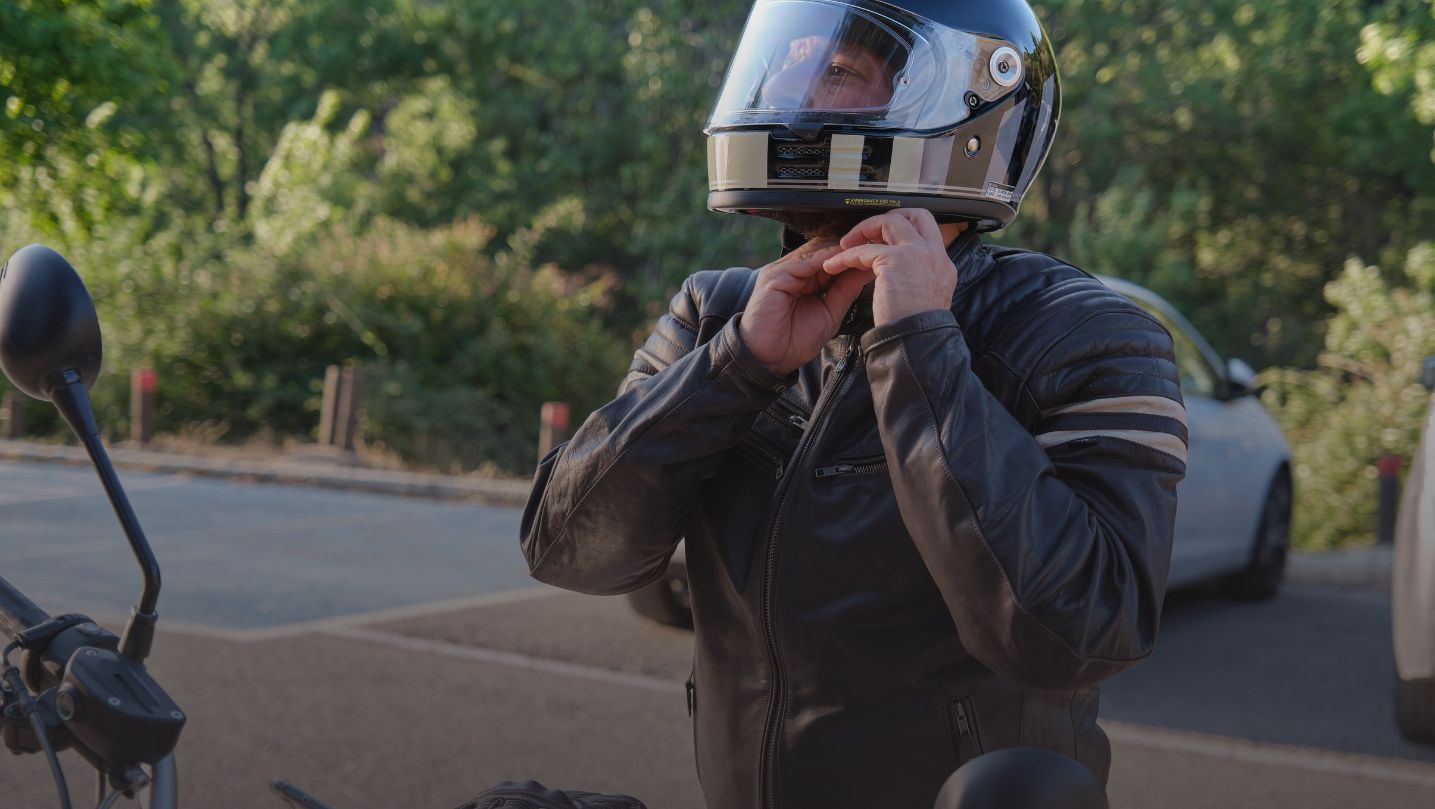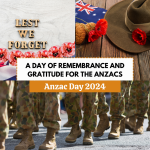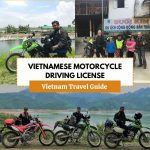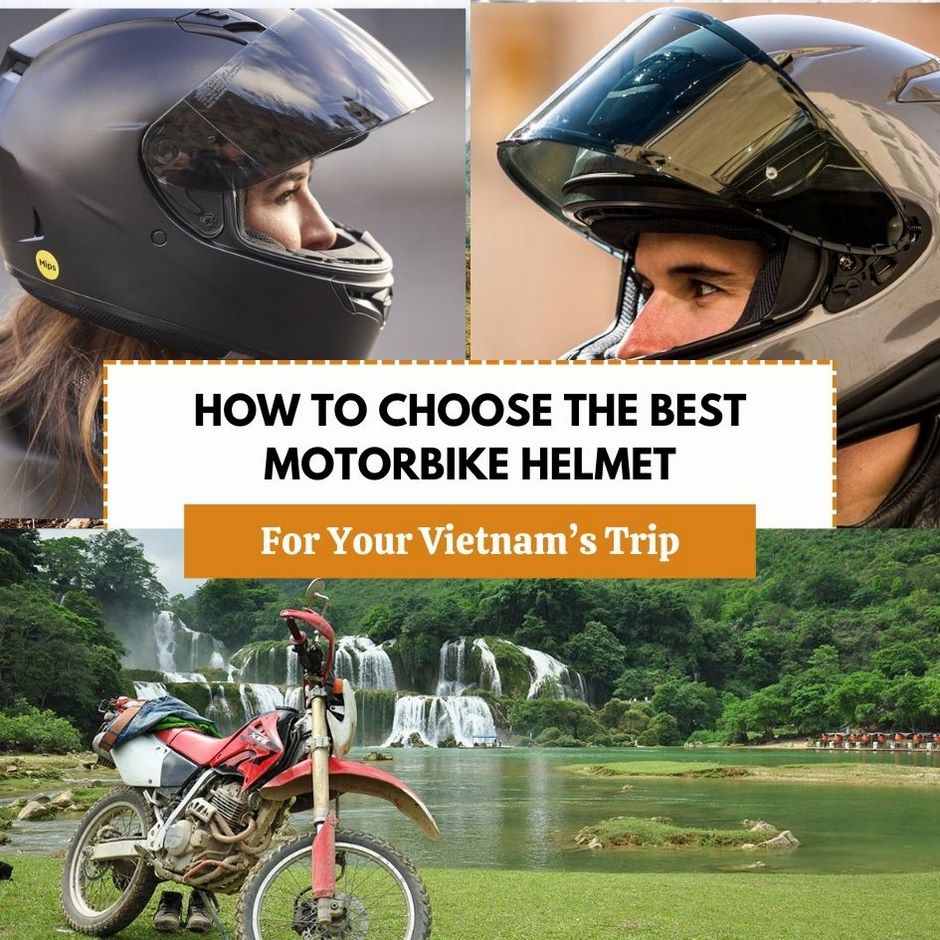
How to Find the Best Motorbike Helmet for Your Vietnam Trip 2023
Riding a motorbike is a great way to explore Vietnam, but you need a good motorbike helmet to protect yourself from accidents and injuries. But you are wondering where to buy the best motorbike helmets or how to choose the best one. In this blog, Vietnam Biker Mates will give you all of the information about motorbike helmets to have a smooth trip in Vietnam.
Why do you need a good motorbike helmet in Vietnam?
Legal reasons
According to Vietnamese law, wearing a motorbikehelmet is mandatory for both drivers and passengers of motorbikes. If you are caught without a helmet, you can face a fine of up to 200,000 VND (about 9 USD) or have your motorbike confiscated. Moreover, if you are involved in an accident and you are not wearing a helmet, you can be held liable for any damages or injuries caused to yourself or others. Therefore, wearing a helmet is not only a legal obligation, but also a way of avoiding unnecessary trouble and hassle.
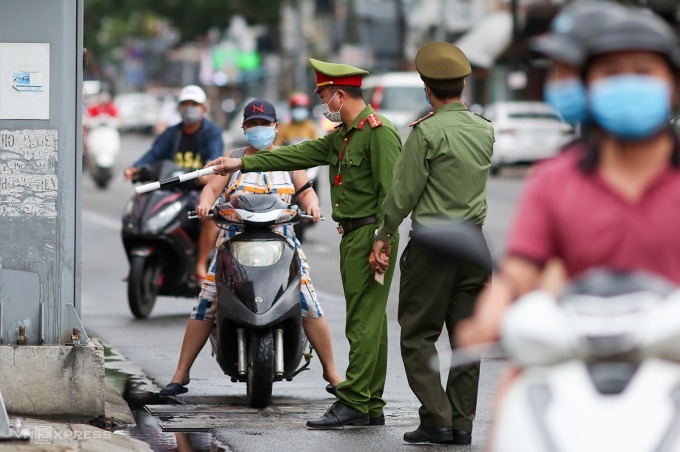
Wearing a helmet when participating in traffic is mandatory in Vietnam ( Source: Internet )
Safety reasons
The second and more important reason why you need a good motorbike helmet in Vietnam is safety. Vietnam has one of the highest rates of road traffic accidents and fatalities in the world, with an average of 30 deaths per day. Motorbike riders are especially vulnerable to injuries and deaths, as they account for 59% of the total road traffic fatalities. Many of these accidents are caused by factors such as poor road conditions, traffic congestion, reckless driving, and lack of awareness and enforcement of traffic rules. Wearing a helmet can significantly reduce the risk of head and brain injuries, which are the leading causes of death and disability among motorbike riders.

Safety is the most factor when taking motorbike trip ( Source: Internet )
About traffic rules and road hazards>>>Road Safety For Riding In Vietnam 2024
How to choose the best motorbike helmet for your Vietnam trip
There are many factors that you need to consider when choosing a motorbike helmet, such as type, size, fit, safety standards, features, and accessories. Here are some tips and guidelines to help you make the right decision:
1. Type
There are different types of helmets, such as full-face, dual-sport, modular, half-face, and quarter helmets. Each type has its own pros and cons, depending on your preferences, needs, and riding conditions :
- Full-face helmets: These are the most common and popular type of helmets, as they offer the most protection and coverage for your head, face, and chin. They also have a visor that can shield your eyes from wind, dust, rain, and insects. Full-face helmets are suitable for long-distance and high-speed riding, as they can reduce noise and increase aerodynamics. However, full-face helmets can also be heavy, hot, and claustrophobic, especially in tropical climates like Vietnam. They can also limit your peripheral vision and communication with other riders.
- Dual-sport helmets: These are a hybrid type of helmets that combine the features of full-face and off-road helmets. They have a large visor that can be lifted up or removed, and a peak that can block the sun and provide ventilation. Dual-sport helmets are suitable for adventure and off-road riding, as they can adapt to different terrains and weather conditions. However, dual-sport helmets can also be bulky, noisy, and unstable, especially at high speeds. They can also interfere with some goggles and sunglasses.
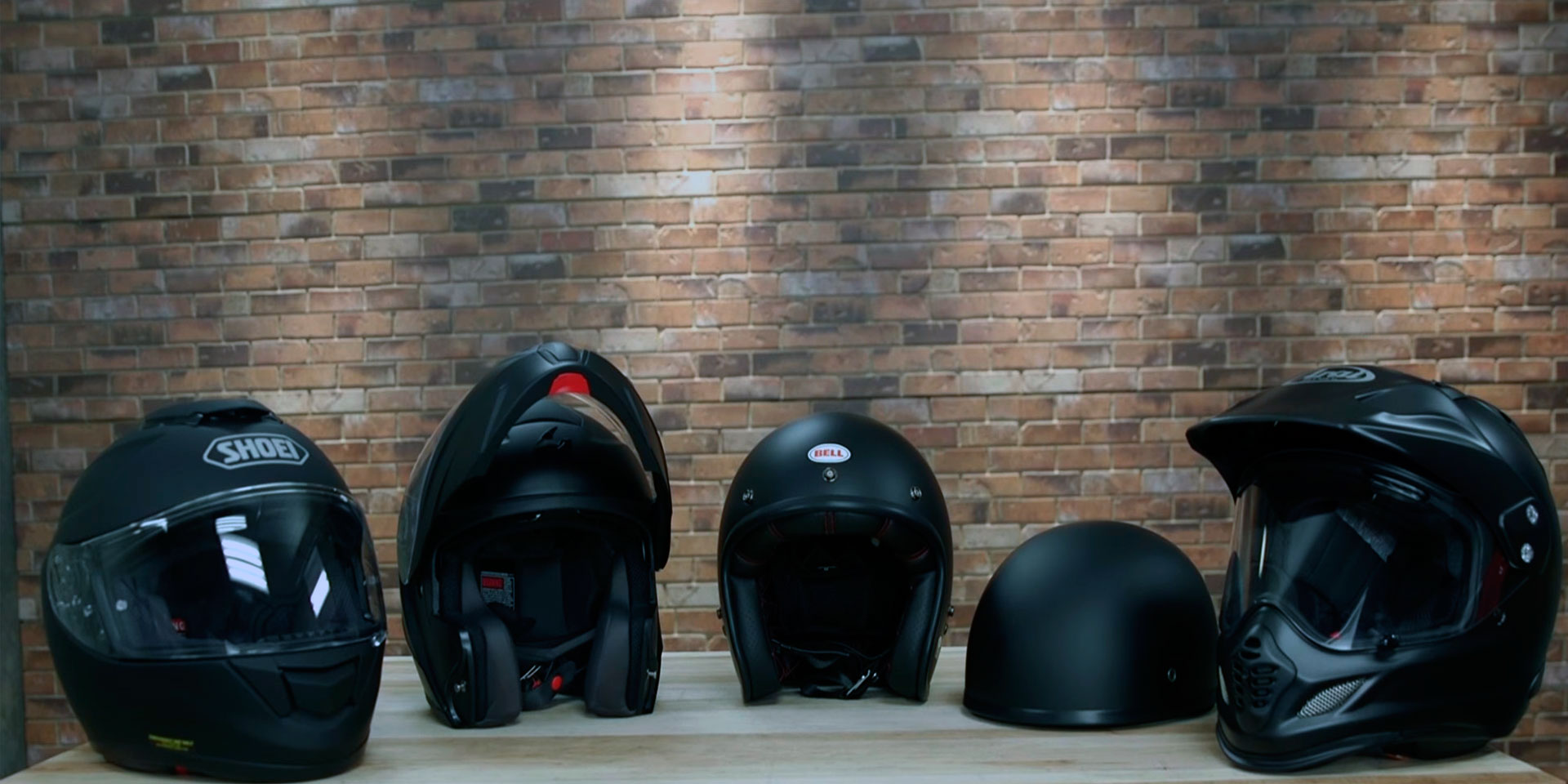
Some types of motorbike helmets ( Source: Internet )
- Modular helmets: These are also known as flip-up helmets, as they have a chin bar that can be flipped up or down, allowing you to switch between full-face and open-face modes. Modular helmets are suitable for touring and urban riding, as they offer convenience and versatility. You can flip up the chin bar when you want to talk, eat, drink, or breathe easier, and flip it down when you want more protection and security. However, modular helmets can also be heavy, complex, and expensive, and they may not be as safe and durable as full-face helmets. They can also create more wind resistance and noise when the chin bar is up.
- Half-face helmets: These are also known as open-face helmets, as they cover only the top and back of your head, leaving your face and chin exposed. They usually have a visor or a snap-on shield that can protect your eyes, but some models do not have any eye protection at all. Half-face helmets are suitable for casual and low-speed riding, as they offer more comfort, ventilation, and visibility. They can also allow you to wear glasses, headphones, or a mask more easily. However, half-face helmets can also be less protective and secure, as they do not cover your face and chin. They can also expose your eyes to more wind, dust, rain, and insects, and they can be easily knocked off or stolen.
- Quarter helmets: These are also known as skull caps, as they cover only the top of your head, leaving the rest of your head and face exposed. They do not have any visor, shield, or chin strap, and they are usually secured by a simple elastic band or a snap button. Quarter helmets are suitable for minimal and stylish riding, as they offer the least amount of restriction and weight. They can also allow you to show off your hair, beard, or tattoos more easily. However, quarter helmets can also be the least protective and safe, as they do not cover any part of your face or chin. They can also expose your head and face to more injuries, sunburn, and weather elements, and they can be easily lost or damaged.

Choosing your helmets to prioritize safety and comfort over style ( Source: Internet )
As you can see, there is no one-size-fits-all type of motorbike helmet, and you need to choose the one that suits your personal preferences, needs, and riding conditions. You can also have more than one type of helmet, depending on the situation and the occasion.The choice is yours, but remember to always prioritize safety and comfort over style and appearance.
2. Size
The size of the helmet is determined by the circumference of your head, measured around the widest part of your forehead, above your eyebrows and ears. You should measure your head size accurately, and compare it with the sizing chart of the motorbike helmet that you want to buy. To test the fit and stability of the helmet, you can do the following:
- Shake your head from side to side and up and down, and see if the motorbike helmet stays in place or moves around.
- Push the helmet forward and backward, and see if it covers your forehead and the back of your head properly, or if it exposes any gaps or spaces.
- Pull the helmet up and down, and see if it covers your ears and your chin adequately, or if it leaves any areas unprotected or exposed.
- Look left and right, and see if the helmet allows you to see clearly and widely, or if it blocks or limits your peripheral vision.
- Listen to the sounds around you, and see if the helmet allows you to hear clearly and loudly, or if it muffles or reduces your hearing.

How to measure the size of your helmets ( Source: Internet )
3. Safety standards
The safety standards are the minimum requirements and criteria that the helmet must pass in order to be certified and approved for use. The safety standards are set by different organizations and agencies, such as the United Nations, the European Union, the United States, and others. The safety standards test the helmet’s performance and resistance to various impacts, forces, and conditions, such as penetration, abrasion, retention, and ventilation. The safety standards also specify the markings and labels that the motorbike helmet must have to indicate its compliance and validity. Some of the most common and recognized safety standards for helmets are:
- ECE 22.05: This is the safety standard set by the Economic Commission for Europe (ECE), and it is the most widely used and accepted standard in the world. It applies to all countries that are members of the United Nations, and it is also recognized by many other countries, such as Australia, New Zealand, Japan, and others. The ECE 22.05 standard tests the helmet’s impact absorption, retention system, field of vision, and chin strap. The helmet must have a label with the letter “E” followed by a number indicating the country of certification, and a series of numbers and letters indicating the type and version of the standard.
- DOT FMVSS 218: This is the safety standard set by the Department of Transportation (DOT) of the United States, and it is the mandatory standard for all helmets sold and used in the US. It applies to all states and territories of the US, and it is also recognized by some other countries, such as Canada, Mexico, and others. The DOT FMVSS 218 standard tests the helmet’s impact attenuation, penetration resistance, retention system, and labeling. The motorbike helmet must have a label with the letters “DOT” indicating its compliance with the standard.
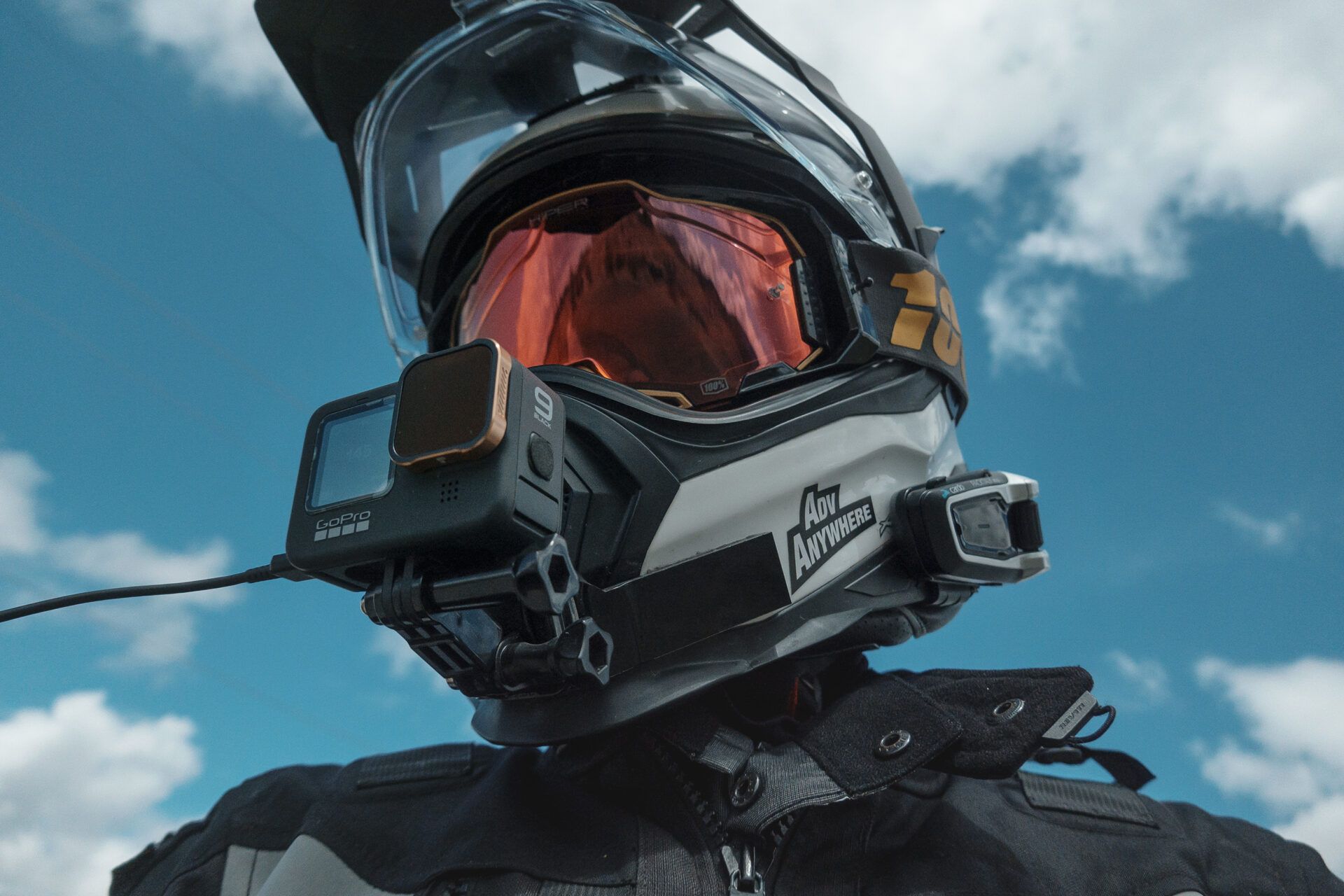
Consider the safety standards first of your motorbike helmet ( Source: Internet )
4. Features and accessories
The features and accessories are the additional elements and components that can enhance the functionality and performance of the motorbike helmet. Some of the most common ones are:
- Communications gear: This is a set of devices that allow you to communicate with other riders, passengers, or your smartphone via Bluetooth or radio. Some helmets have built-in speakers and microphones, while others have slots or mounts for external devices.
- Helmet camera: This is a small camera that can be attached to your motorbike helmet and record your ride. It can capture high-quality video and audio, and some models can also stream live footage to your smartphone or social media platforms.
- Aerodynamics and noise reduction: These are aspects that affect the performance and comfort of your motorbike helmet at high speeds. A good touring helmet should have a streamlined shape that reduces wind resistance and drag, and a padded interior that absorbs and blocks the wind noise.
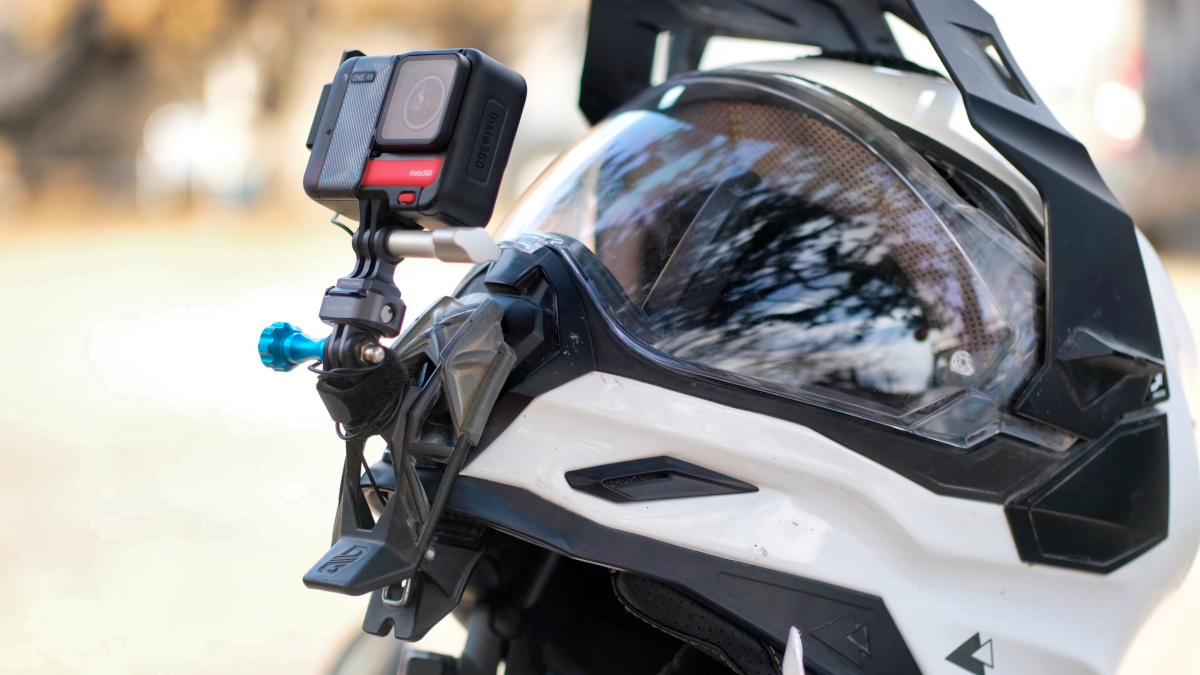
Motorbike helmet attach with camera and communication gear ( Source: Internet )
- Reflective material: This is a type of fabric or tape that reflects light and make you more visible to other road users, especially at night or in low-light conditions.
- Tinted, photochromatic and reflective shield: These are different types of shields that can adjust to the light conditions and protect your eyes from UV rays, dust, insects, and debris. Tinted shields have a dark color that reduces the brightness of the sun. Photochromic shields change their tint automatically depending on the light intensity. Reflective shields have a mirror-like coating that reflects the light and gives you a cool look.
- Eject helmet removal system: This is a device that allows emergency personnel to safely remove your helmet without causing further injury to your neck or spine. It consists of an inflatable airbag that is inserted inside the helmet and can be activated by a pull cord.
Where to buy the best motorbike helmet?
There are three main options that you can choose from: online, in your home country, or in Vietnam. Each option has its own pros and cons, depending on your preferences, needs, and budget. Here are some pros and cons of each option:
1. Online
Buying a motorbike helmet online can be convenient and easy, as you can browse through a wide range of helmets from different brands, models, and types, and you can compare the prices, features, and reviews of different helmets. You can also order the helmet from the comfort of your home or office, and you can have it delivered to your doorstep or to your destination. However, buying a helmet online can also have some drawbacks, such as you cannot try the helmet on before buying it, you may have to pay extra for the shipping, handling,…etc. Thus, check and consider carefully when you decide to buy.

How to buy motorbike helmet online ( Source: Internet )
2. In your home country
Buying a motorbike helmet in your home country can be safe and reliable, as you can visit a local or a nearby helmet shop or store, and you can see, touch, and try the helmet in person. You can also ask for the advice and the assistance of the staff or the experts, and you can get the motorbike helmet adjusted or customized to your liking. You can also avoid the hassle and the cost of shipping, handling, and customs fees, and you can have the motorbike helmet in your possession immediately.
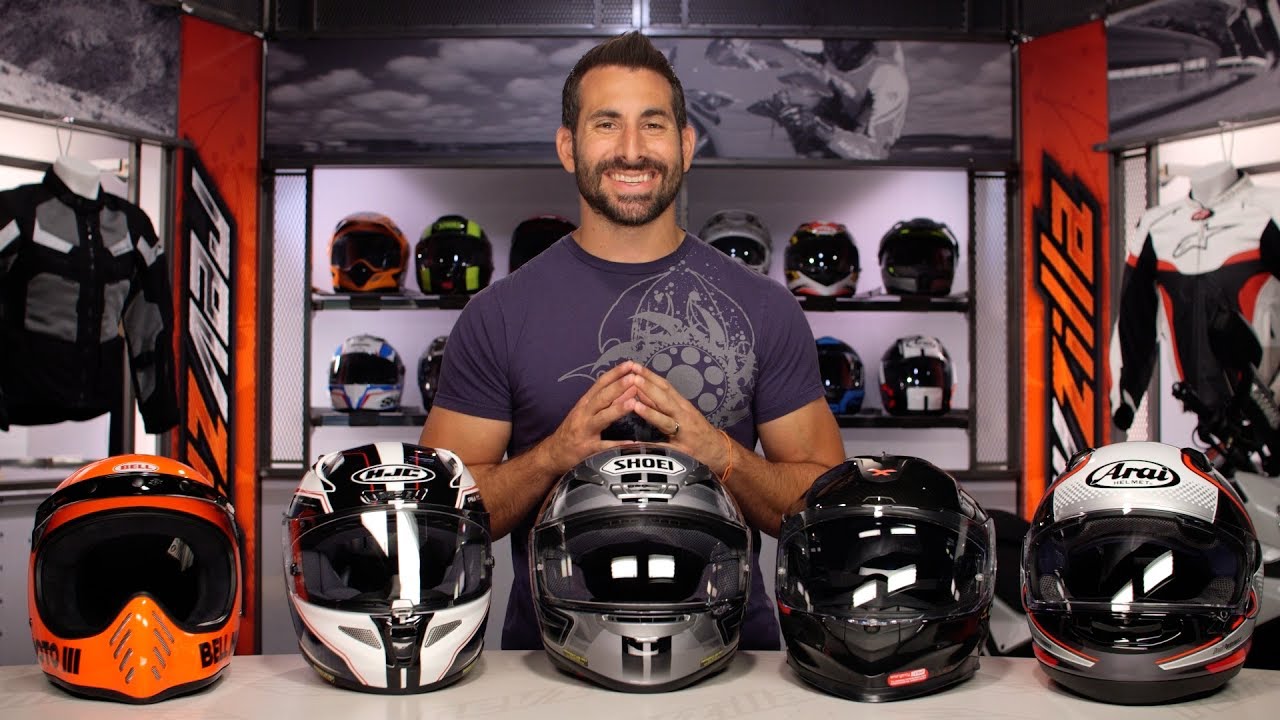
Buy motorbike helmet in your home country ( Source: Internet )
3. In Vietnam
Buying a Vietnam motorbike helmet can be cheap and easy, as you can find many motorbike helmet shops and stores in major cities, such as Hanoi, Ho Chi Minh City, and Da Nang. You can also find many local and international brands, models, and types of helmets, and you can bargain for the best price. You can also avoid the hassle and the cost of carrying or packing the helmet with you when you travel to Vietnam, and you can have the motorbike helmet ready and available for your trip.

Buy reputable official motorbike helmet stores in Vietnam ( Soure: Internet )
If you decide to buy a helmet in Vietnam, you should make sure that you buy it from a reputable and reliable helmet shop or store, such as Andes Helmet, Protec Helmet, or Royal Helmet. You should also check the quality, the safety, and the warranty of the helmet, and you should ask for the receipt and the certificate of the helmet. You should also measure your head size and shape accurately, and you should try the helmet on and see how it fits and feels on your head. You should also check the rules and regulations of helmet use in Vietnam.
Read more>>>What are driver’s license requirements for travelers?
Conclusion
In conclusion, finding and buying the best motorbike helmet for your Vietnam trip can be a simple and easy way of finding and buying the best helmet for your Vietnam trip. You need a good helmet to protect yourself from accidents and injuries, and you need to consider the type, size, fit, safety standards, features, and accessories of the helmet. You also need to choose the best option for buying the helmet, whether online, in your home country, or in Vietnam. We hope that this blog has helped you to find and buy the best motorbike helmet for your trip.
Check out related blogs
Why Honda motorbikes are mostly used for Vietnam off road motorbike tours ?

